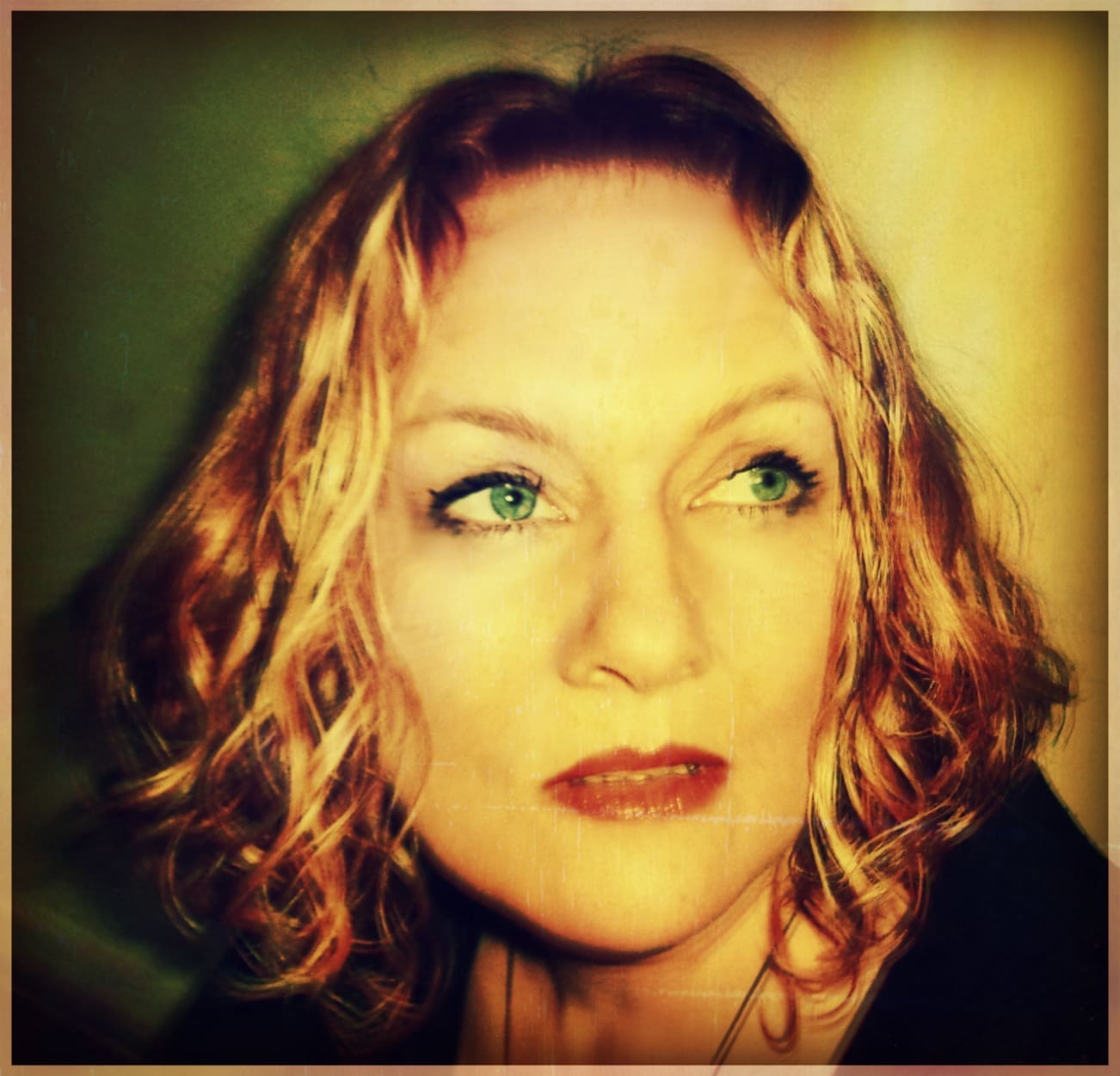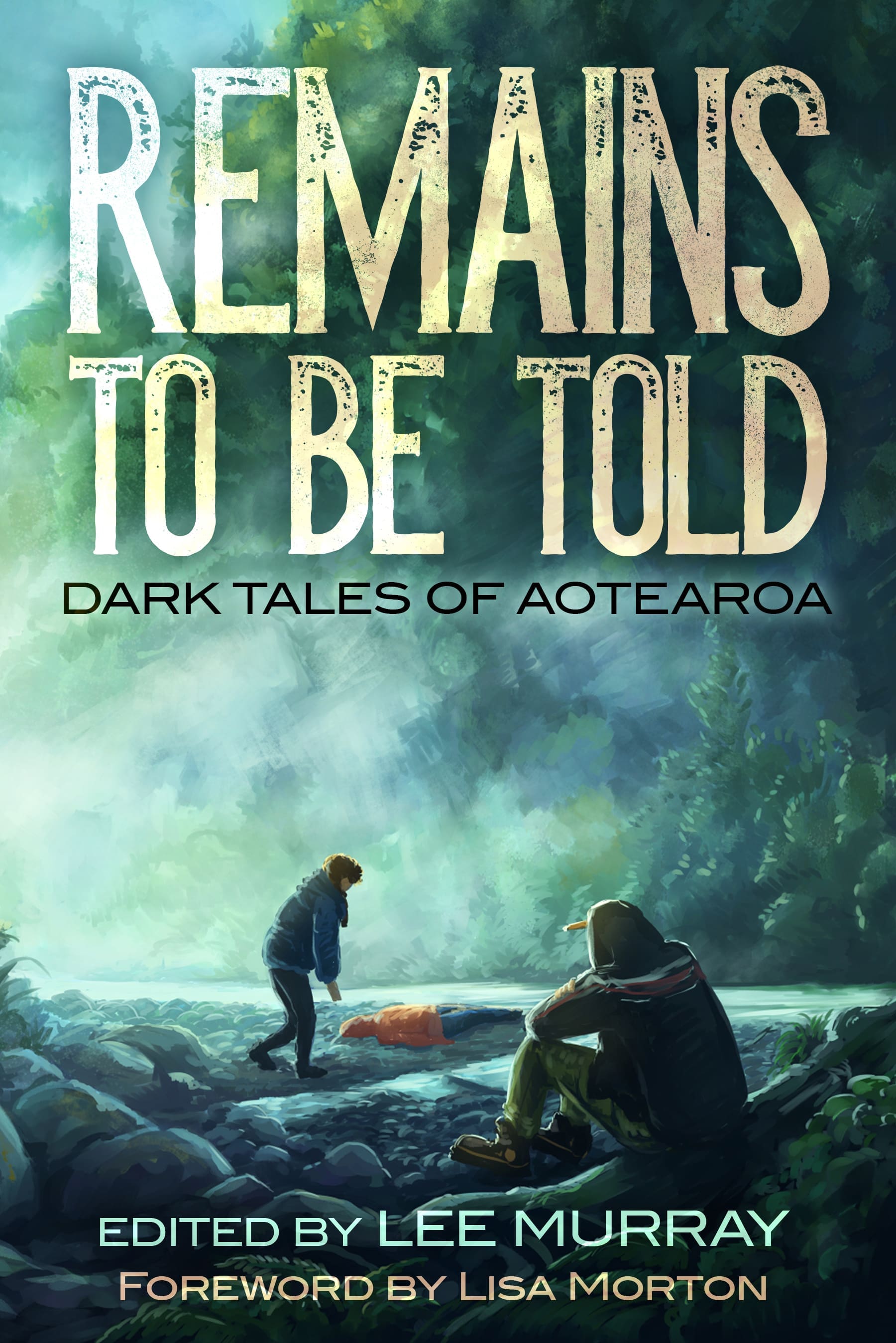REMAINS TO BE TOLD – An interview with Kiwi author Tracie McBride
REMAINS TO BE TOLD – An interview with Kiwi author Tracie McBride
In this unique interview series, we chat with the contributors of Kiwi horror anthology Remains to Be Told: Dark Tales of Aotearoa, edited by five-time Bram Stoker Award-winner Lee Murray (Clan Destine Press, 1 October).
Today, we welcome author Tracie McBride, whose shocking short story “Her Ghosts” appears in the anthology.
Tell us about your story in the anthology.
My short story writing process usually takes one of two paths – either I have the entire plot and concept in mind from the beginning, or I start with a seed and have to write my way through to something approaching coherency. “Her Ghosts” fell into the latter category. It took a few months for all the ideas to coalesce, and they came to me in dribs and drabs.
The idea for my protagonist Callie, a reluctant psychic, came first. My mother and stepfather have been doing a lot of genealogy research in recent years and uncovered some interesting legends about Māori priestesses in my whakapapa. I got to thinking about how their reputed power might have been suppressed over generations of colonialism, and how that might affect someone trying to reconcile such abilities with twenty-first century life and ideas.
The seismic activity came next. In my early brainstorming, playing around with the premise for the anthology, the phrase “uncanny disturbances” stood out, and earthquakes were the first thing I thought of. I wasn’t sure what role they would play at first, only that there had to be some. There is a theory that the low frequency, inaudible to the human ear, at which earthquake waves travel can cause unusual reactions in living creatures, from feelings of dread and fear to optical illusions. I had forgotten about this until my daughter reminded me after the story was finished; perhaps that knowledge had been working in my subconscious throughout the writing process.
Finding a suitable antagonist was trickier. Just having a garden variety lunatic running around kidnapping kids felt inadequate. Like Callie, anger does not come to me easily, so I put some thought into the kind of person who really pisses me off – and then I had him.
 What, in your view, are the core elements of Aotearoa horror? What makes Kiwi horror unique?
What, in your view, are the core elements of Aotearoa horror? What makes Kiwi horror unique?
I haven’t been back to my country of birth for several years, so perhaps I now view it through an overly nostalgic lens, but I find it difficult to think of it as a scary place. For me, the horror lies in the forgotten and the hidden; the creatures concealed in the bush and in the mist, the cautionary tales told in Māori myths and legends.
Aotearoa has many haunted / weird places –Tarawera, St James theatre, St Bathans are famous examples – but it is also full of quiet unease, uncanny objects, unexpected occurrences. Please share an everyday observation if you have one.
In my family, it’s the people who are haunted, not the places. Well, ‘haunted’ isn’t quite the right word – ‘visited by spirits’ might be more apt. In saying that, though, I talked to my father once about this peculiar sensation whenever I returned to Northland after a long absence; while I was away, I would be perfectly content, but as soon as I returned, I would be filled with a powerful urge to stay. He told me that it was my Māori blood calling me home.
Would you like to choose a paragraph from your story?
Callie took a deep swallow from her glass to reduce the spilling risk and weaved her way out of the press of bodies. Her own body coiled tight with anxiety; the pub on a Saturday night was her least favourite place to be, but her community’s unwritten rules dictated that she put in an appearance.
A tiny vibration – earthquake? – shimmered through the floorboards. They experienced several minor tremors a year, and everyone accepted that a major quake was a matter of when, not if. Callie paused, looking around to see if anyone else had noticed. The party continued unabated. Callie rolled her shoulders to release the extra layer of tension and moved on.
What draws you to horror?
As a reader, I have been drawn since a child to all things speculative, and like to read across the spectrum of science fiction, fantasy and horror. When I took up writing as an adult, I naturally gravitated towards writing speculative fiction. Then that gravitational pull just dragged me to the Dark Side.
Horror is affective, which means it is different for all of us. What book/author scared you most, and why? Or which horror book do you wish you’d written?
Although China Miéville describes himself as a writer of weird or fantastic fiction rather than a horror writer, he has written some of the scariest characters – for example, the Weaver in Perdido Street Station, and Goss and Subby in Kraken– I have ever encountered in print. Their extreme amorality, great power, and opaque and alien thought processes make them terrifying.
Name a Kiwi urban myth / folktale / historical event that needs to be a horror story.
There are so many to choose from! Perhaps because you already mentioned it, the eruption of Mount Tarawera in 1886 is the first that springs to mind. The ghostly apparitions said to have preceded it and the devastation that followed makes it ripe for the retelling.
Halloween in New Zealand. Is it a thing? Yes or no? What’s your take?
Halloween is like other observations transported from the Northern Hemisphere, such as Easter and Christmas, that don’t make a lot of sense with the reversal of the seasons. But if you’re looking to fulfill a quota of nonsensical traditions, you could do worse than to swap out Guy Fawkes Night for Halloween.
Thanks for dropping by, Tracie!
 Featuring uncanny disturbances, death, and the dank breath of the native bush, Remains to be Told: Dark Tales of Aotearoa is an anthology of dark stories and poems mired in the shifting landscape of the long white cloud, and deeply imbued with the myth, culture, and character of Aotearoa-New Zealand. Laced with intrigue, suspense, horror, and even a touch of humour, and comprising a range of subgenres, the volume showcases some of the best homegrown and Kiwi-at-heart voices working in dark fiction today.
Featuring uncanny disturbances, death, and the dank breath of the native bush, Remains to be Told: Dark Tales of Aotearoa is an anthology of dark stories and poems mired in the shifting landscape of the long white cloud, and deeply imbued with the myth, culture, and character of Aotearoa-New Zealand. Laced with intrigue, suspense, horror, and even a touch of humour, and comprising a range of subgenres, the volume showcases some of the best homegrown and Kiwi-at-heart voices working in dark fiction today.
Includes stories and poems by Neil Gaiman, Owen Marshall, Gina Cole, Tim Jones, Lee Murray, Dan Rabarts, Marty Young, Debbie Cowens, Paul Mannering, Tracie McBride, Kirsten McKenzie, Jacqui Greaves, Nikky Lee, William Cook, Bryce Stevens, Kathryn Burnett, Celine Murray, Denver Grenell, Del Gibson & Helena Claudia. Foreword by six-time Bram Stoker Award-winner, Lisa Morton.
Remains to be Told: Dark Tales of Aotearoa is published by Clan Destine Press Australia with the kind support of Creative New Zealand. Original cover art by Sir Julius Vogel Award-winner, Emma Weakley. https://www.clandestinepress.net/products/remains-to-be-told
Tracie McBride is a New Zealander of Ngāpuhi descent who lives in Melbourne, Australia. A member of the HWA and the AHWA, her work has appeared in over 100 print and electronic publications, including the Stoker Award-nominated anthologies Horror for Good and Horror Library Volume 5. She has two short story collections in print, Ghosts Can Bleed and Drive, She Said, and her work has won or been shortlisted for various awards including the Sir Julius Vogel Award, the Aurealis Award, and the Shadows Award. Visitors to her blog are welcome at http://traciemcbridewriter.wordpress.com/.
linktr.ee/traciemcbride
- About the Author
- Latest Posts
The Horror Tree is a resource for horror authors which was created in 2011. The main goal when starting the site was to include all of the latest horror anthologies and publishers that are taking paying submissions. A resource useful for both new and experienced publishers alike looking for an outlet for their written material!













